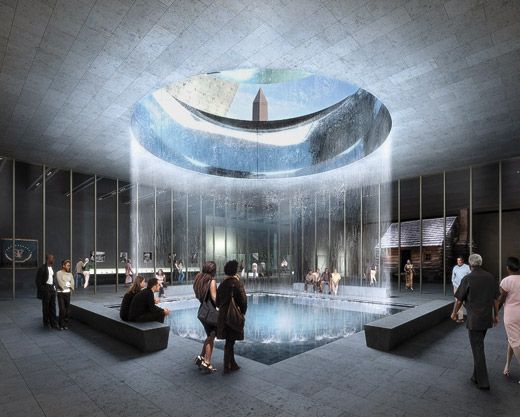Dream Building
The African-American story is integral to our history. It is the story of a people’s struggle to throw off the shackles of oppression in a nation founded on the ideals of freedom and equality. But it is also a tale of triumph over adversity: the resistance of the Underground Railroad and Rosa Parks; the jazz and blues rooted in work songs; the journey from Jim Crow to the 2008 election of President Obama. In 2015, the Smithsonian will bring these and many other parts of the story to the world at the new National Museum of African American History and Culture (NMAAHC). The groundbreaking ceremony is scheduled for February 22.
The new museum is a historic project, the realization of a decades-long dream. Since 1915 African-American leaders have advocated for a presence on the National Mall for viewing the American experience through the lens of black Americans. The persistence of many, especially Representative John Lewis, an original Freedom Rider and one of my personal heroes, finally pushed the idea through Congress in 2003, and President Bush signed it into law. Once that hurdle had been cleared, the Smithsonian needed a passionate champion who could make real the dream. It was evident that Lonnie Bunch was the visionary the project needed. When hired as NMAAHC’s founding director, he remarked, “It is a reality now. I just don’t have a building yet.”
Lonnie and his hard-working staff have already acquired a huge collection of artworks and artifacts; and they already offer an impressive array of programs. (Please see nmaahc.si.edu for information.) Our architects designed a building worthy of these efforts, one that will stand prominently on the Mall, between the Washington Monument and the National Museum of American History. The new museum will reach skyward, creating an uplifting space of hope and resilience. Topped by a three-tiered corona, it will allow in abundant daylight and emit a luminescent amber glow at night. It will also integrate the best of sustainable design, making it practical as well as beautiful.
The museum will illuminate African-American contributions to American culture, science, art and history, and it will foster understanding of world cultures by examining the African diaspora. By partnering with museums across the country and inviting individuals to share their treasures with us, it will also enhance the Smithsonian’s collaborative outreach. Most important, the NMAAHC will remind us all and visitors from abroad that appreciating the African-American experience is essential for understanding America. We are proud to tell this universal story of remembrance, reflection and rejoicing.
/https://tf-cmsv2-smithsonianmag-media.s3.amazonaws.com/accounts/headshot/wayne-clough-240.png)

/https://tf-cmsv2-smithsonianmag-media.s3.amazonaws.com/accounts/headshot/wayne-clough-240.png)